|
In my last post I said I had written a new scenario for the first day of the Battle of Kulm, 29 August 1813, using Sam Mustafa’s Blücher rules. It is on the Blucher Scenario Page. We have now played the scenario three times, with two wins for the Russians and one for the French. All three games were close and the players seemed to enjoy them. We played the first game at my local club with two players a side and me as umpire. One player had played the rules before but the others were all new to them. They picked them up quickly, all being experienced with the period and with various other Napoleonic rules. The second game was between me and my son Nick, who has played Blücher several times. I umpired the third game for Harry and Dan, both new to Blücher and still quite new to Napoleonics. Over the three games and between these eight people, I believe the rules passed the tests for accessibility, plausibility and fun. Hats off to Sam Mustafa and his play testers for such a polished product. He does make exceedingly good rules! The figures we used are 6mm on 80mm x 40mm movement trays. Most are MDF Commission Figurines, with a few metal Heroics figures. The scenario held up well but I tweaked it between the first and second games, mainly to simplify the map. I had got out of the habit of making maps for Blücher’s scale and on the first version I included secondary tracks and altogether too many building bases. The table was cleaner for games two and three. The orders of battle and reinforcement schedules remained the same for all three games. For game three I added traits to the two commanders, because it seems to encourage player engagement if their model general plays a distinct role in the battle. I made Vandamme inspiring (+1 die in combat) and Ostermann-Sacken heroic (has the Rally ability). From time to time when we play Blücher, somebody proposes a House rule, normally regarding the (in)ability of infantry to fire into or out of a built up area. Another recurring suggestion is to allow prepared infantry to fire a proportion of their elan out to their flanks. I’ve been happy to make house rules for various sets, especially Napoleon’s Battles, which acquired a mass of add-on rules over the decade or more that we played it. However, I still resist adding house rules to Blücher because it flows so well and the justification for most rules decisions is provided by the author. For example, his argument against firing into/out of BUAs is that this rule doesn’t mean musketry didn’t take place, just that at the concentration it occurred, neither garrison nor troops in the open would have suffered an appreciable drop in combat effectiveness. Infantry cannot shoot a garrison out of a town: it has to kick them out. And of course, combat in Blücher represents everything involved in an assault, including close range musketry. So anyway, as yet we have no house rules and I doubt we will ever add them. How the games playedI’m never sure how interested people are by blow-by-blow battle reports. But the differences between how the three games played were interesting. The first, which was a French victory, saw the French concentrating on the right wing and pouring a lot of effective skirmish fire into the Russians, who were all deployed forward along the stream between the two villages. The Russians had almost no units in reserve, which meant the French, with superior skirmishing ability, were able to grind them down before closing. When the French attacked across the stream, the already depleted Russians were easier to defeat.
In game two, a Russian win, the Russians deployed some way back from the stream line (except for garrisoning the two villages) and kept a big reserve that they sent forward sparingly. In this game the French ran out of time to take their objectives and found that the fresh units they needed to assault the villages were too far away to affect the final phase. The third game saw the French take both Straden and Priesten, but they were kicked out of both by Russian counter-attacks. Straden changed hands four times, ending up n Russian possession. I really like Blücher’s mechanics for fighting for BUAs. The initial fight to eject a garrison is tough but if/when it succeeds, a seesaw fight can follow as each side sends in fresh units to try to retake the BUA before the enemy occupying it can form into garrison. This chimes with accounts of village fighting being far more fluid than some rules make it, and where final possession often went to the side with the last formed reserves to send in. All three games were close. My notes to self after playing them include: don’t put all your units up front; reinforce when you have to but don’t expose units unnecessarily; cavalry can affect more enemy units when it is a threat than once it has charged a target; and remember that even winners take a loss in combat, so you can grind a strong enemy down by sending in a succession of assaults. Overall, this has been a fun scenario and I’d like to reuse it in a year or so.
0 Comments
I have uploaded a new scenario for Blücher on the Napoleonic Scenarios Page, based on the first day of the battle of Kulm. It is a chance to deploy the Russian Guard who, while used in combat more frequently than the French Old Guard, are not often seen slogging it out in the front line. We are playing this scenario on 12 December with 6mm figures and a scale of 1BW to 2”. I will report on how it plays.
We are playing a game of Epic 40K (3rd edition) on Saturday, with armies of 5,600 points apiece. The notes below are for those players who want to put themselves into the story beforehand (I’m looking at you, Dan!). The scenario is adapted from the Rescue scenario in the Epic Battles Book. Background: the fair planet of ArcadiaAgri-world 966, known to its inhabitants as Arcadia, was already inhabited by primitive Orks when the Imperium first colonised it. The Ork population was small, unusually peaceable and concentrated in the remote western fringes of the main continent, which are unsuitable for human agriculture. After a half-hearted, expensive and unsuccessful campaign to eliminate the indigenous Orks, the planetary Governor decided to live and let live. The two races slowly learned to rub along together, with only the occasional spat in the Western Fringes, quickly suppressed by Imperial forces. This near harmonious coexistence ended centuries later when an Ork hulk crashed into the Western Fringes, bringing the mightily ambitious Bad Moon Warlord, Tamrine. Disgusted by the unwarlike traits of the native Orks, he decided to whip them into shape and then to wipe the Imperium off the face of the planet. Waagh! Tamrine was born. Lulled by generations of coexistence with the indigenous Orks, the Arcadian Planetary Governor was slow to recognise the danger posed by Waugh! Tamrine. She reckoned the latest Ork incursion could be dealt with by the Planetary Defece Forces, without seeking help from off-world. This proved a major miscalculation, as Waagh! Tamrine smashed through the Imperial defences and laid waste to thousands of square miles of Arcadian farmland. Realising her error, the Governor begged for assistance from the Sector Council, warning that her forces could not hold out for long unaided. Fortunately for Arcadia, the Sector Council was able to respond to the governor’s pleas, sending, first, a detachment of Imperial Fists and subsequently, a smaller detachment of Space Wolves to assist the PDF. These reinforcements arrived on Arcadia not a moment too soon. Scenario: The Battling Bastards of BastionAt the point our game begins, Waugh! Tamrine has driven deep into Imperial territory. In the chaos of the Arcadian retreat, Imperator Titan Tiberius, undergoing a refit at the settlement of Bastion, has been cut off by the Ork advance and is behind the front line. Tiberius is one of only two Imperator Titans on Arcadia and its loss is unthinkable. It is protected by a small detachment of Imperial Guard. Tamrine is as determined to take the Titan as the Imperium is desperate to recover it.
Tiberius is placed in the settlement of Bastion. Deploy up to 1,400 points of Imperial Guard detachments to protect it, within a 60cm square. The Orks then all deploy in an area 60cm deep, starting 60cm from the nearest defender of Bastion. Exception: up to 3 Ork detachments may begin off table. Place their HQs on any of the three table edges, level with the perimeter of the Imperial garrison. They will enter on turn 1. Finally, the Imperial players place HQs for the rest of the Imperial army on the short table edge furthest from the Titan. Every HQ must be placed within 15cm of the first HQ placed. Exception: up to 4 HQs may be placed anywhere along the table edge. The Imperial objective is to keep control of Titan Tiberius. The Ork objective is to capture or destroy it. Tiberius has enough power to operate its void shields but can neither move nor fire. Victory conditions. The side that controls the Titan at the end of turn 6 wins the game. Before then, if either side’s morale drops to zero, it loses immediately. The Orks may target the Titan but if they destroy it, they can only win by reducing Imperial morale to zero. I have written a new scenario for Sam Mustafa’s Lasalle, based on the actions of Girard’s 7th Division at the battle of Ligny. Separated from II Corps, Girard was attached to Vandamme’s III Corps for the assault on the Prussian right flank, anchored on a string of villages along the Ligne brook. At the height of the fighting Girard was mortally wounded. The scenario covers the episode where Girard, having taken the village of Saint Amand La Haye, was counterattacked from the front and left flank. I chose this point in the action because the points values of the two sides at this point almost exactly match the standard weighted scenario in the rules, so 300 points of Prussians attacking 240 points of French. We havent played it yet so I can’t vouch for how it plays, but hope to do so in a month or so. The scenario can be found on the Napoleonic scenarios page here.
A quick game to sort out rules queriesThis week, Chris and I met to work through some of the questions that arose during our multiplayer Leipzig game on 23 January. As I mentioned in the report of that game in my previous blog post, the limited format of Osprey’s blue books means that cases will arise that the published rules don't cover. Easy to sort out in a one to one game but as we intend to play Absolute Emperor again with two or more players a side, we wanted to clarify how we will deal with them in future. So we sat down with our notes from the 23rd and played a game through as a workshop. Möckern: a tough little fightTo give us an interesting situation I adapted a Blucher scenario for the combat at Möckern on 16 October 1813 for AE. This didn’t give that many more units per side than the introductory scenarios in the AE rulebook, though it did give an interesting asymmetry where the French had cavalry advantage while the Coalition had more infantry. Plus, I find a game based on a real engagement more, erm, ‘engaging’ than one that’s been made up. Chris took the role of Marshal Marmont, defending Möckern and the high ground beside it against my army of Yorck’s Prussians and Langeron’s Russians. See the scenario here. Although the aim was to create some situations where we could test or agree house rules, we actually had a tricky and challenging game. How the game playedChris set up his main line from Möckern in the west to beyond Klein Widderitzsch in the east. He had infantry on his left and mostly cavalry on the right. My Prussians advanced down the road from Wahren to Möckern and the advance guard, which was classified veteran as it included Grenadier battalions, assaulted the village. In the east, my Russians arrived between Breitenfeld and Lindenthal, to find that Chris had pushed his cavalry forward to threaten any advance beyond these villages. Meanwhile my further Prussian reinforcements started extending the Prussian line eastwards. The mid-game saw a steady grind in the fight for Möckern, in which I pulled back the advance guard as its strength nearly gave out, and fed in a fresh brigade to assault Chris’ unit in the village. Further east, my intended assault on his hilltop position was held up by effective artillery and infantry fire, which twice inflicted a Halt or worse result on the same Prussian unit. In retrospect I could have/should have spend some of Yorck’s elan to restore this unit’s forward momentum. At the point where two of my units were disordered by enemy fire, Chris launched a spoiling attack that swept one unit away and sent the other reeling backwards. In the same turn my assaut on Möckern village finally succeeded, but I had an embarrassing hole in my centre. Next turn, having more than done its job, Chris withdrew his army along the whole front, reasoning that his elan was now dangerously low and his cavalry in particular was close to breaking. We agreed that his aggressive forward defence had held up the Coalition advance sufficiently to give him the win. Some rules clarifications/amplificationsWe agreed various fiddly clarifications but these were our main house rules:
When we played AE with 15mm units, an infantry unit in line was 160mm wide so we used the standard AE movement and shooting distances. For this game, we used 6mm units which were 120mm wide in line. As this distance is 3/4 of the width of our 15s, we reduced all standard distances by a quarter. Thus, Infantry fire up to 3” instead of 4”, cavalry charge is 6” not 8” and so on. I am running a game at our club next Friday to try to attract more players. No doubt more questions will arise that we haven’t thought of yet! |
Archives
November 2023
Categories
All
|
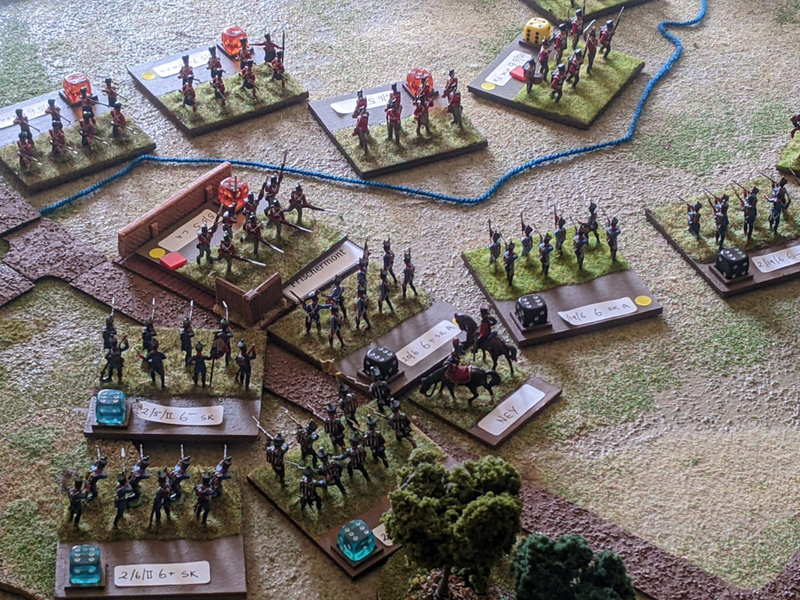

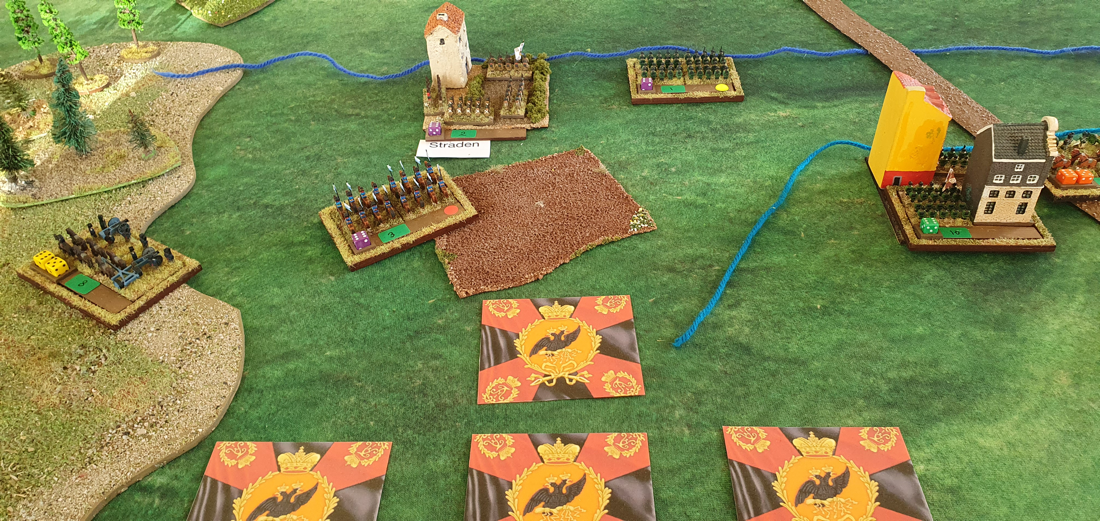



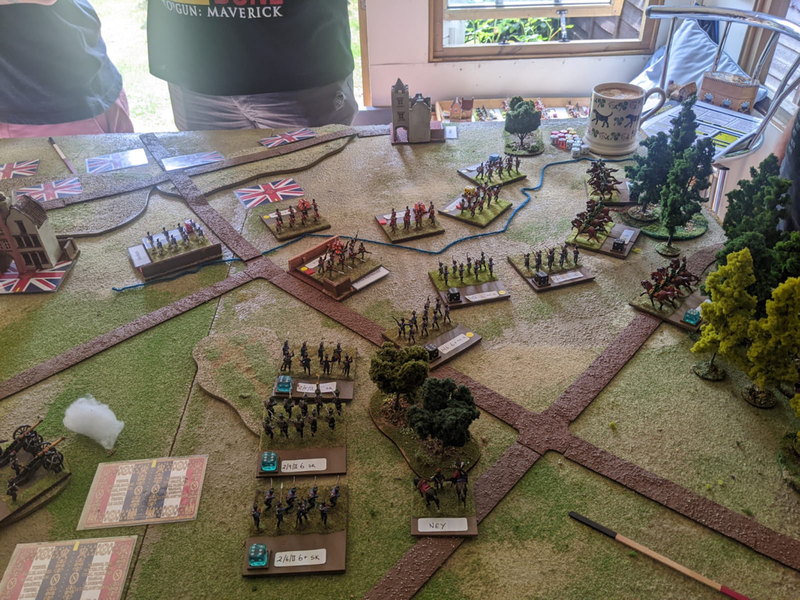


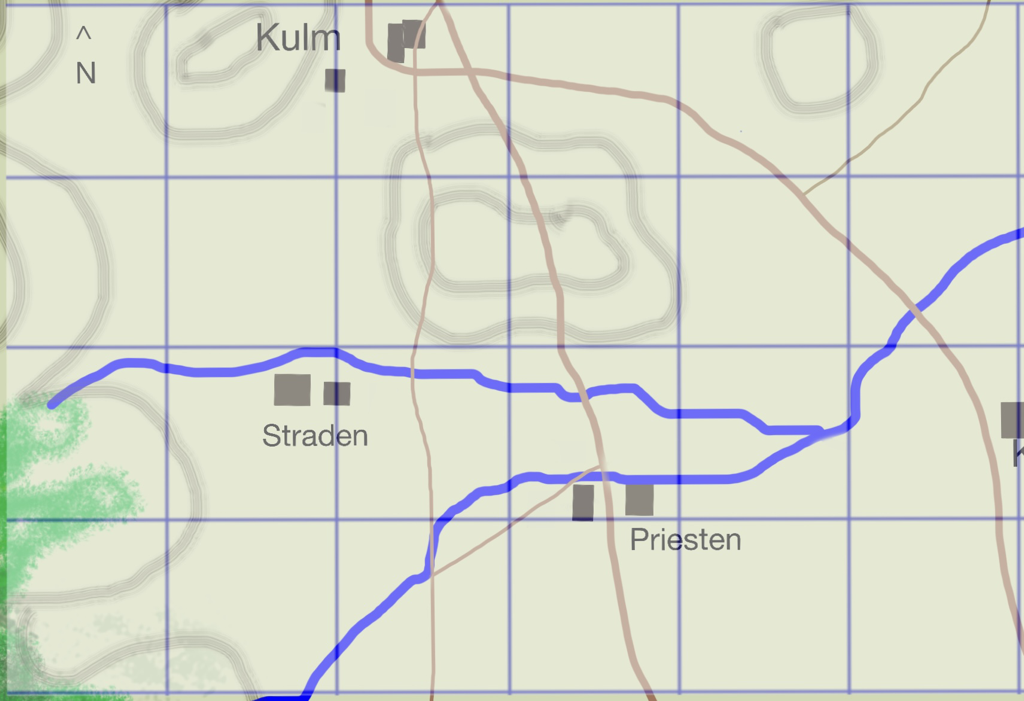


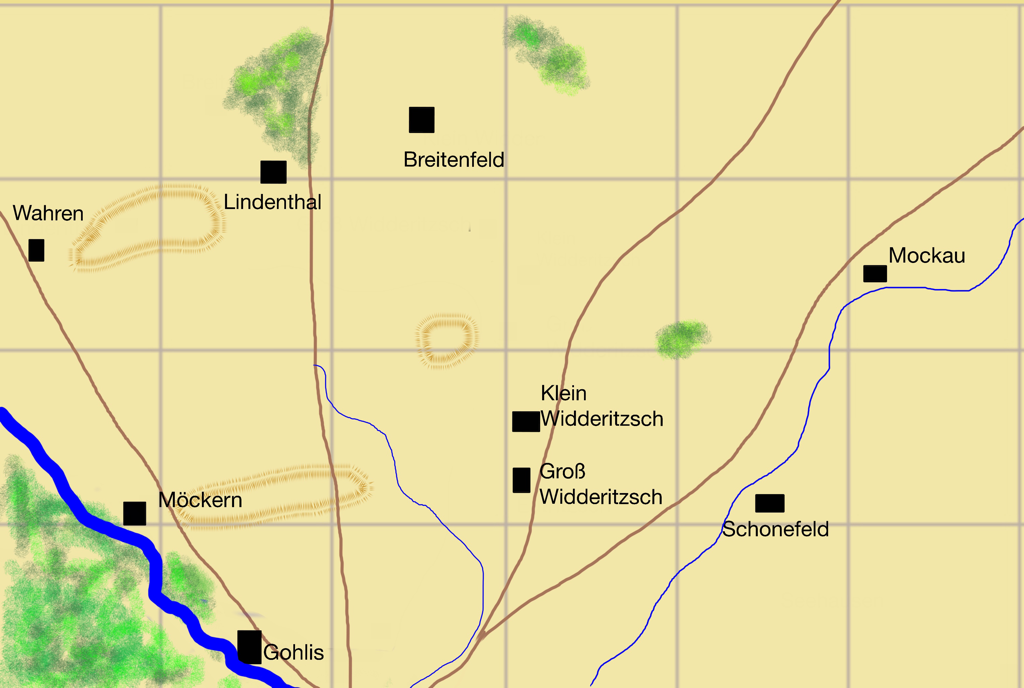
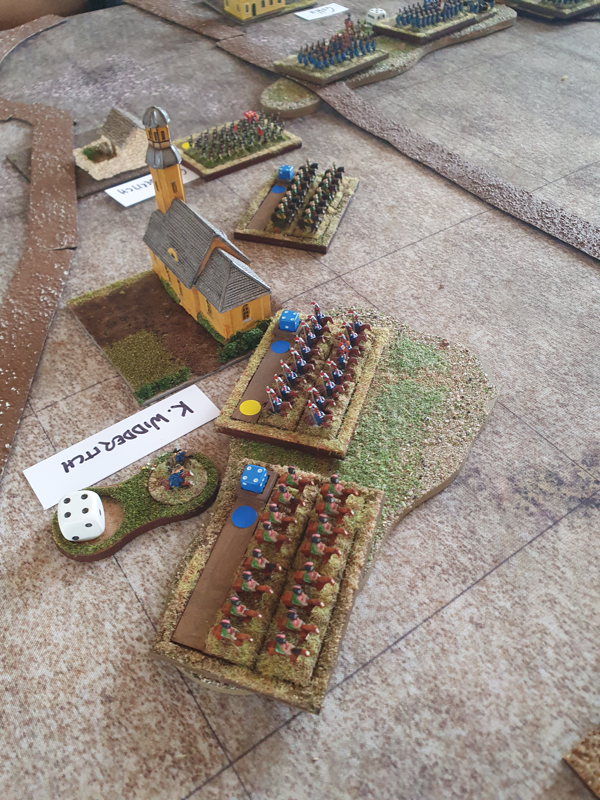



 RSS Feed
RSS Feed